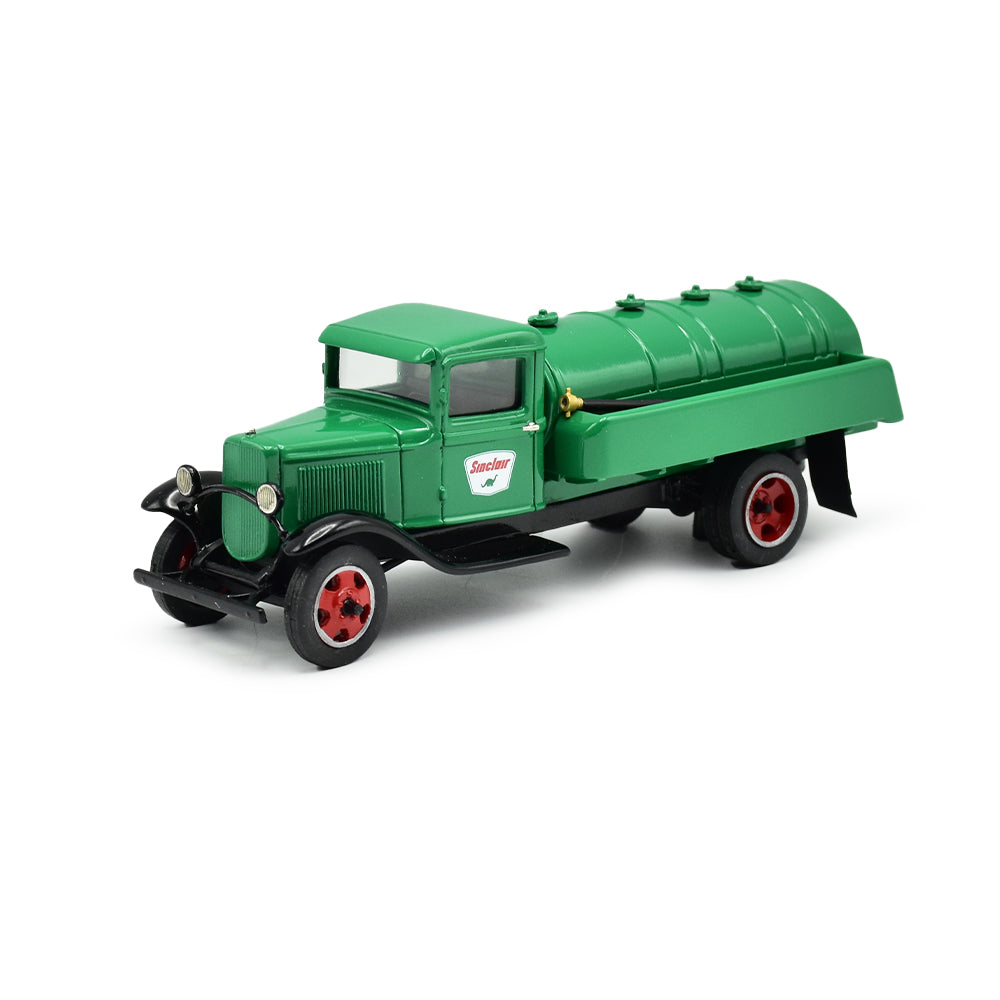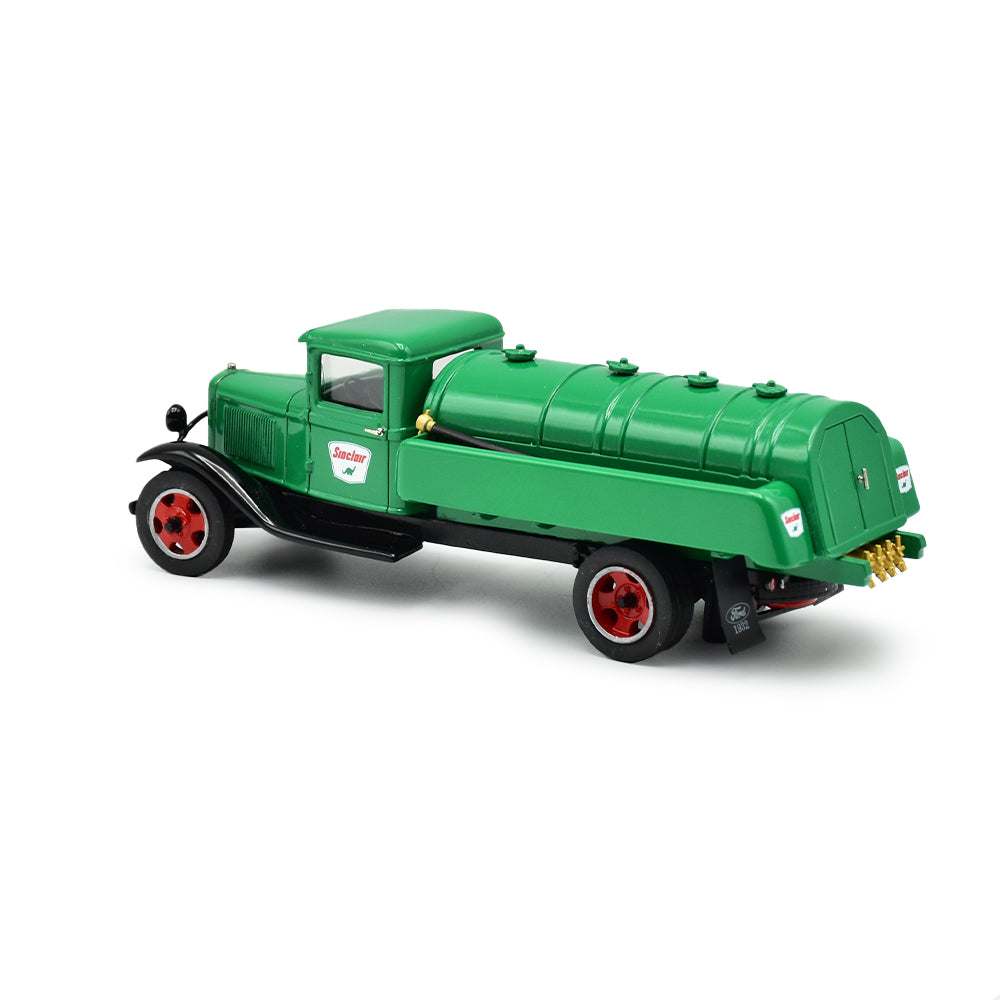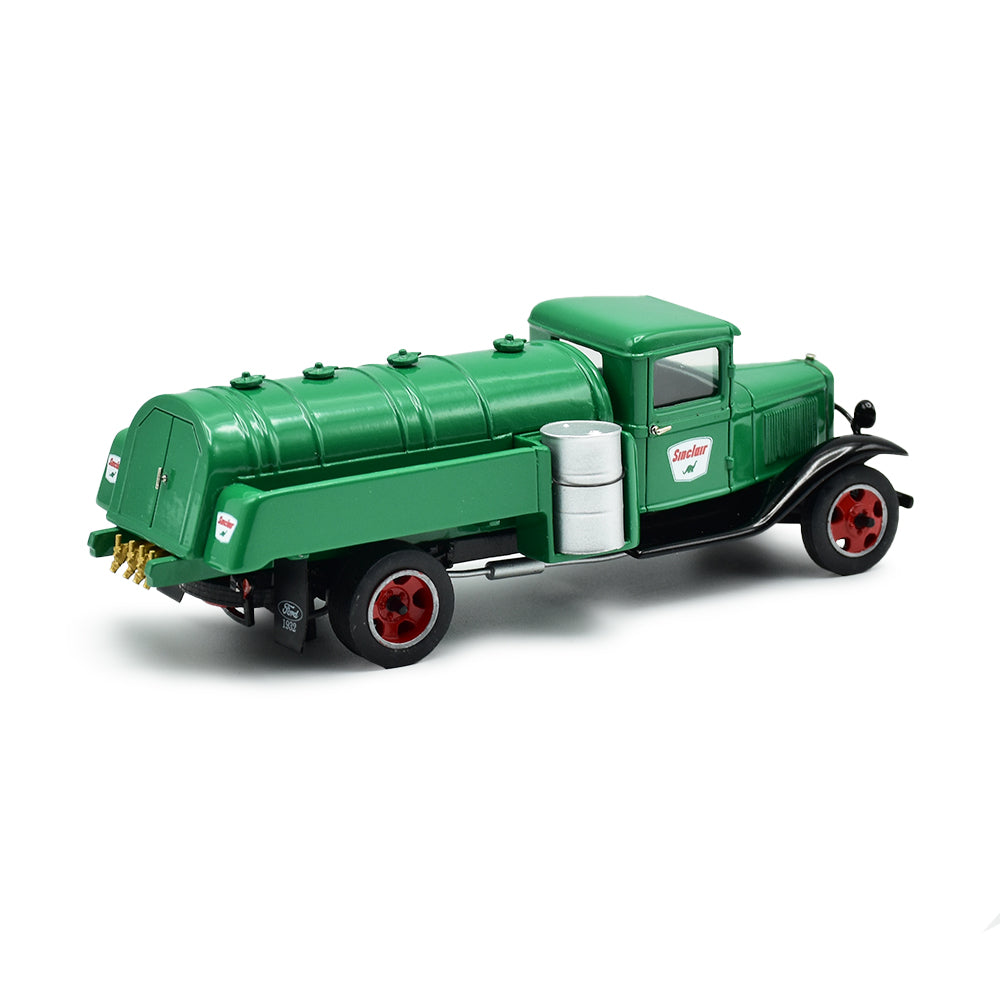1932 Ford BB Tank Truck
SKU: BRK242
AVAILABILITY: Out of Stock
BODY TYPE: Tank Truck
MAKER: Ford
COLOR: Green
MEASURE: 105mm or 4 ¼ inch
SCALE: 1:43
YEAR: 1932
DECADE: 30
The Thirties decade was a challenging time for Ford. Even if very close to the times when the Company completely dominated the market, Ford had to accept the idea that its rivals, Chevrolet in particular, had become a threat. As a result, new products and features began coming out much faster than in the years when everything was centered on the Model T. The truck market had become very important too. Ford had set some industry record sales in the late twenties, but during the Great Depression it fell behind Chevrolet. Ford’s approach to trucks had been very simple. Light-duty commercial cars, like half-ton pickups, were accompanied by a line of related, similarly styled but much stronger trucks. Bodies, fenders, cabs, radiator grilles and interior were all shared between the small commercial cars and the bigger and stouter trucks. Heavy duty axles, suspensions, wheels, and a strengthened frame were the main differences. Even the engines were shared between light duty and heavy duty vehicles. The one-ton weight-load of the Model TT was succeeded in 1928 by the one and a half ton capacity of the Model AA. These trucks were contemporary with the Model T and Model A cars.
When the updated Model B was released for 1932, along with a similar Model 18 V8 passenger car, so was a line of BB trucks. The heavier trucks shared newly restyled cab with the smaller commercial models, including the hood and the grille. The interior was similar to what was used on the new passenger car, but with a Model A four spoke steering wheel. The wheelbase for the Model AA and model BB was the same, at 131.5 and 157 inches, but the frame was made stronger and 50 inches long semi-elliptical springs replaced cantilever springs at the rear. The fuel tank capacity was expanded from 11 to 17 gallons, and its location was moved from the cowl to under the seat. All the added weight put considerable strain on the small, 50 horsepower 200 cubic inches that powered the big BB truck. The truth is that a new, more powerful engine had been introduced in the passenger and commercial light-duty lines, but development and reliability problems plagued the new V8 engine. For the first time, a V8 engine was offered in an economical car, but the methods used to cast the engine blocks were still a bit primitive, so the failure rate on these engines was very high. In the early days of production the reject rates for faulty blocks was almost 100%. Once the casting problems were solved, reliability problems arose. The new engines used a lot of oil, so pistons, heads and even complete engines had to be changed. The heavy duty usage that could be foreseen for trucks would have been a problem for the undeveloped new engines, which even in the lightweight car were unreliable and plagued with defects. When the reliability issues were finally solved in the latter part of 1932, the 221 cubic inch, 65 horsepower V8 became available, at first on buses and then on the one and a half ton trucks. Behind either engine, there was a four-speed heavy-duty transmission with low first gear, and a dual wheel rear axle. Most of the truck sold by Ford were just chassis and cab, while the commercial body construction was left to outside suppliers. Even if Ford offered some factory-built setups in their catalog, it had become common practice to buy specialized outfits from outside suppliers.














